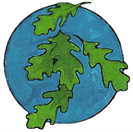

Sources:
Trees of North America- A guide to field identification-a Golden Field Guide from St. Martin's Press © 2002 By C. Frank Brockman p.28
The Encyclopedia of North American Trees by Sam Benvie. Firefly Books Ltd.,2000 Buffalo, NY © 2000 Sam Benvie p.163,164
Diseases of Trees and Shrubs, 2nd edition, by Wayne A. Sinclair and Howard H. Lyon, © 2005 Cornell University, Cornell University Press, p. 300, 446, 502
USDA, NRCS. 2011. The PLANTS Database (<http://plants.usda.gov/>, 22 August 2011). National Plant Data Team, Greensboro, NC 27401-4901
Carey, Jennifer A. 1992. Pinus clausa. In: Fire Effects Information System, [Online]. U.S. Department of Agriculture, Forest Service, Rocky Mountain Research Station, Fire Sciences Laboratory (Producer). Available: http://www.fs.fed.us/database/feis/ [2011, August 22].
Trees of North America- A guide to field identification-a Golden Field Guide from St. Martin's Press © 2002 By C. Frank Brockman p.28
The Encyclopedia of North American Trees by Sam Benvie. Firefly Books Ltd.,2000 Buffalo, NY © 2000 Sam Benvie p.163,164
Diseases of Trees and Shrubs, 2nd edition, by Wayne A. Sinclair and Howard H. Lyon, © 2005 Cornell University, Cornell University Press, p. 300, 446, 502
USDA, NRCS. 2011. The PLANTS Database (<http://plants.usda.gov/>, 22 August 2011). National Plant Data Team, Greensboro, NC 27401-4901
Carey, Jennifer A. 1992. Pinus clausa. In: Fire Effects Information System, [Online]. U.S. Department of Agriculture, Forest Service, Rocky Mountain Research Station, Fire Sciences Laboratory (Producer). Available: http://www.fs.fed.us/database/feis/ [2011, August 22].
Map courtesy USDA NRCS PLANTS Database
Sand Pine,
Pinus clausa (Chapm. ex Engelm.) Vasey ex Sarg.
Pinus clausa (Chapm. ex Engelm.) Vasey ex Sarg.
Common names: Scrub Pine, Spruce Pine
Synonyms:
Pinus clausa (chapm. Ex Engelm.) Vasey ex Sarg. ssp immuginata (Ward) E. Murray
Pinus clausa (chapm. Ex Engelm.) Vasey ex Sarg. var. immuginata
State List: AL, FL, GA, MS, NC
Visit the Image Gallery for more photos
View all North American native Pine Trees
Pinus clausa (chapm. Ex Engelm.) Vasey ex Sarg. has two variations. They are:
• Pinus clausa (chapm. Ex Engelm.) Vasey ex
Sarg. var ocala- Ocala Sand Pine
• Pinus clausa (chapm. Ex Engelm.) Vasey ex
Sarg. var immuginata- Choctawhatchee Sand Pine
(pronounced chock-tah-wah-hah-chi)
Synonyms:
Pinus clausa (chapm. Ex Engelm.) Vasey ex Sarg. ssp immuginata (Ward) E. Murray
Pinus clausa (chapm. Ex Engelm.) Vasey ex Sarg. var. immuginata
State List: AL, FL, GA, MS, NC
Visit the Image Gallery for more photos
View all North American native Pine Trees
Pinus clausa (chapm. Ex Engelm.) Vasey ex Sarg. has two variations. They are:
• Pinus clausa (chapm. Ex Engelm.) Vasey ex
Sarg. var ocala- Ocala Sand Pine
• Pinus clausa (chapm. Ex Engelm.) Vasey ex
Sarg. var immuginata- Choctawhatchee Sand Pine
(pronounced chock-tah-wah-hah-chi)

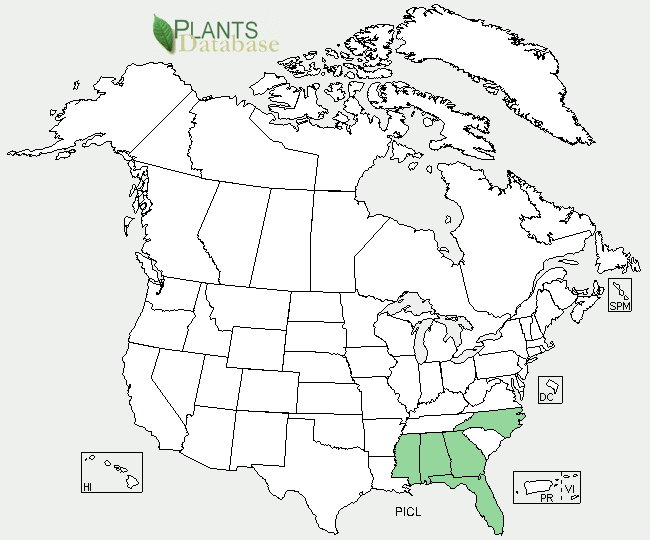
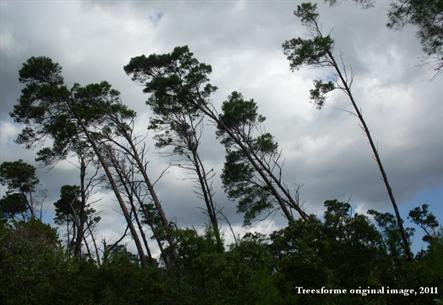
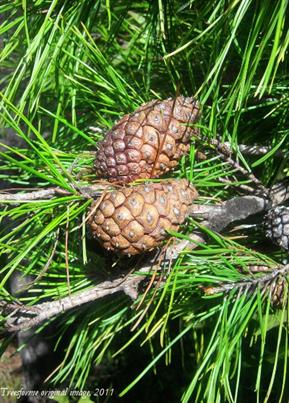
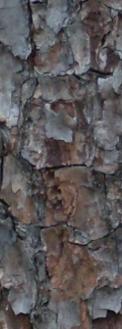
may be level, gently rolling or hilly and are within an elevation range of 20 to 200 feet. It is shade intolerant, and in areas without recurring fires, Sand pine is usually replaced by taller species as it is eventually shaded out. This is a very important native species as sand pine forests provide shelter
Mature bark of Sand Pine.
Brevard County, Florida
©2011, Treesforme original image. See usage requirements.
Brevard County, Florida
©2011, Treesforme original image. See usage requirements.
Immature female cones, Pinus clausa var. clausa
Ocala Sand pine. Brevard County, Florida
©2011, Treesforme original image. See usage requirements.
Ocala Sand pine. Brevard County, Florida
©2011, Treesforme original image. See usage requirements.
to 65 (as recorded at Cape Canaveral), barreled through central Florida, pounding the area for the better part of a day. This particular pine was at least 12 inches in diameter, and an estimated 50 feet tall. In the same park as this tree, at least 10 other trees had fallen, most of which were mature sand pine, destroying a gazebo and an elevated boardwalk in the process. On the positive side, it presented an excellent chance to study the otherwise sky bound mature crown up close. Probably not the best choice of tree species to have too close to your house.
Uses
Sand pine is not commercially valuable. It is sometimes used for pulpwood and fuel. While rarely used as an ornamental landscape tree, the Choctawhatchee (pronounced chock-tah-wah-hah-chi) variety is sometimes used as a Christmas tree for its dense foliage and pyramidal shape when young. Like all pines, Sand pine resin contains turpentine, which can be distilled, and has been used to treat a variety of ailments, such as respiratory complaints like coughs and colds, by way of a steam baths or an inhaler, and was also put into poultices to treat skin irritations and wounds.
Uses
Sand pine is not commercially valuable. It is sometimes used for pulpwood and fuel. While rarely used as an ornamental landscape tree, the Choctawhatchee (pronounced chock-tah-wah-hah-chi) variety is sometimes used as a Christmas tree for its dense foliage and pyramidal shape when young. Like all pines, Sand pine resin contains turpentine, which can be distilled, and has been used to treat a variety of ailments, such as respiratory complaints like coughs and colds, by way of a steam baths or an inhaler, and was also put into poultices to treat skin irritations and wounds.
contribute to this condition. Often the trees felled during these storms are sand pine. The image to the above right is the crown of a tree felled the previous afternoon when a strong, almost tropical strength thunder storm with sustained winds of 45 m.p.h and gusts up
Leaning mature stand, Pinus clausa var. clausa, Ocala Sand pine.
Brevard County, Florida ©2011, Treesforme original image. See usage requirements.
Brevard County, Florida ©2011, Treesforme original image. See usage requirements.




™
- Trees
- A-Z scientific
- A-Z by Common Name
- Families
- Aceraceae Maple Family
- Anacardiaceae Sumac Family
- Annonaceae Custard Apple Family
- Aquifoliaceae Holly Family
- Arecaceae, Palm Family
- Betulaceae Birch family
- Bignoniaceae Trumpet Creeper Family
- Burseraceae Frankincense Family
- Caprifoliaceae Honeysuckle Family
- Chrysobalanaceae Coco-plum Family
- Cornaceae Dogwood Family
- Cupressaceae Cypress Family
- Cyrillaceae Cyrilla Family
- Ebenaceae Ebony Family
- Ericaceae Heath Family
- Fabaceae Pea Family
- Fagaceae Beech Family
- Hamamelidaceae Witch Hazel Ffamily
- Hippocastanaceae Horse Chestnut Family
- Juglandaceae Walnut Family
- Lauraceae Laurel Family
- Leitneriaceae Corkwood Family
- Magnoliaceae Magnolia Family
- Meliaceae Mahogany Family
- Moraceae Mulberry Family
- Myricaceae Bayberry Family
- Myrsinaceae Myrsine Family
- Myrtaceae Myrtle Family
- Nyctaginaceae Four Oclock Family
- Olacaceae Olax Family
- Oleaceae Olive Family
- Pinaceae Pine Family
- Platanaceae Plane Tree Family
- Polygonaceae Buckwheat Family
- Rhamnaceae Buckthorn Family
- Rosaceae Rose Family
- Rubiaceae Madder Family
- Rutaceae Rue Family
- Salicaceae Willow Family
- Sapindaceae Soapberry Family
- Sapotaceae Sapodilla Family
- Simaroubaceae Quassia Family
- Styracaceae Storax Family
- Symplocaceae Sweetleaf Family
- Theaceae Tea Family
- Tiliaceae Lindon Family
- Ulmaceae Elm Family
- Taxaceae Yew Family
- Yucca Family
- Browse by State
- Rare or Endangered Species
- Trees_with_Special_Uses
- Tallest and Biggest
- Noxious Weeds
- Causes
- About Us
- Our Stores

Custom Search
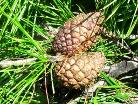
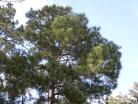
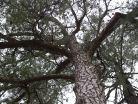
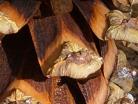
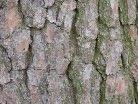
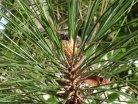
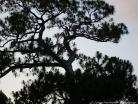


Want to add your tree to our picture gallery? Click here for details!
Tree lists:
•A-Z by scientific
name
•A-Z by common
name
•By Family
For state A-Z list click state name below.
•A-Z by scientific
name
•A-Z by common
name
•By Family
For state A-Z list click state name below.
-Color denotes a tree that is rare or endangered

Botanical
Sand pine has 2 geographic specific variations, the difference being cone behavior. In the Florida peninsula, sand pines are var. clausa, known commonly as Ocala Sand pine. They have mostly serotinous cones, meaning they only open when heat activated. The other variety, var. immuginata occurs in the Florida panhandle and southern Georgia, and is known as Choctawhatchee Sand Pine. Its cones are non-serotinous. Cone adaptations aside, the general characteristics of Pinus clausa apply to the whole species. A slow growing native conifer, it grows up to 80 feet tall but is usually shorter. The needles are bright to dark green, 3 inches long, and have a dense, bushy appearance. Slender, flexible, and stiff, they are 2 bundled and can be straight or slightly twisted. Nestled within the needles, cones grow in whorls and sand pines are capable of producing 2 to 3 whorls of cones per year. Female cones are yellowish-brown, 2 to 3.5 inches long, and have a sharp prickle on each scale. They mature in 2 years but may persist (stay on tree) for up to 10 years. The rough outer bark surface has thin, flaky, grayish brown, irregular plates. Underneath recently fallen pieces, the newly exposed bark is a reddish- orange brown. Sand pine usually has a tall, straight bole, or trunk;however it can be deformed, gnarled, stunted, or in some cases, leaning (see image at page end). The crown is dense but open and can be flat topped, pointed or in between. It is a short lived tree, rarely exceeding 100 years.
Habitat
Interestingly, sites where Sand pines grow are believed to be the remnants of sand dunes and coastlines from the Pleistocene epoch. They are sandy, have an pH range of 4.2 to 5.5, and are usually well draining to extremely well draining. Generally, sites have poor, nutrient deficient soils that are coarse textured. Pinus clausa sites
Sand pine has 2 geographic specific variations, the difference being cone behavior. In the Florida peninsula, sand pines are var. clausa, known commonly as Ocala Sand pine. They have mostly serotinous cones, meaning they only open when heat activated. The other variety, var. immuginata occurs in the Florida panhandle and southern Georgia, and is known as Choctawhatchee Sand Pine. Its cones are non-serotinous. Cone adaptations aside, the general characteristics of Pinus clausa apply to the whole species. A slow growing native conifer, it grows up to 80 feet tall but is usually shorter. The needles are bright to dark green, 3 inches long, and have a dense, bushy appearance. Slender, flexible, and stiff, they are 2 bundled and can be straight or slightly twisted. Nestled within the needles, cones grow in whorls and sand pines are capable of producing 2 to 3 whorls of cones per year. Female cones are yellowish-brown, 2 to 3.5 inches long, and have a sharp prickle on each scale. They mature in 2 years but may persist (stay on tree) for up to 10 years. The rough outer bark surface has thin, flaky, grayish brown, irregular plates. Underneath recently fallen pieces, the newly exposed bark is a reddish- orange brown. Sand pine usually has a tall, straight bole, or trunk;however it can be deformed, gnarled, stunted, or in some cases, leaning (see image at page end). The crown is dense but open and can be flat topped, pointed or in between. It is a short lived tree, rarely exceeding 100 years.
Habitat
Interestingly, sites where Sand pines grow are believed to be the remnants of sand dunes and coastlines from the Pleistocene epoch. They are sandy, have an pH range of 4.2 to 5.5, and are usually well draining to extremely well draining. Generally, sites have poor, nutrient deficient soils that are coarse textured. Pinus clausa sites
for a large number of birds, reptiles and mammals. In fact, 21 federally endangered or threaten plant and animal species live in sand pine forests, including the Florida Scrub Jay, which occasionally makes its nest in young Sand pines. Land clearing for citrus crops, housing developments and business centers has drastically reduced this valuable habitat. Annual rainfall needs are between 40 and 65 inches and sand pine is somewhat tolerant to salinity and drought. It is cold hardy down to 2°F and needs 265 frost free days.
Propagation
Sand pine seeds require cold stratification for germination and it is usually propagated by bare root and container methods, as well as by cuttings and direct seeding.
Pests, Diseases and Elemental Concerns
There are a number of insect pests associated with Pinus clausa. Most common are bark beetles, which are more prevalent during periods of drought and where conifer stands are densely populated. Tip moths, aphids and the defoliating saw fly, Neodiprian pratti, can also cause a lot of damage. Mature Sand pine are also susceptible to wind throw. It is common, along the east coast of Florida at least, to see individual trees or entire stands permanently leaning westward, away from the ocean, as pictured below. Frequent sustained high winds in hurricanes and turbulent, gusty weather from thunderstorms during the volatile rainy season
Propagation
Sand pine seeds require cold stratification for germination and it is usually propagated by bare root and container methods, as well as by cuttings and direct seeding.
Pests, Diseases and Elemental Concerns
There are a number of insect pests associated with Pinus clausa. Most common are bark beetles, which are more prevalent during periods of drought and where conifer stands are densely populated. Tip moths, aphids and the defoliating saw fly, Neodiprian pratti, can also cause a lot of damage. Mature Sand pine are also susceptible to wind throw. It is common, along the east coast of Florida at least, to see individual trees or entire stands permanently leaning westward, away from the ocean, as pictured below. Frequent sustained high winds in hurricanes and turbulent, gusty weather from thunderstorms during the volatile rainy season
